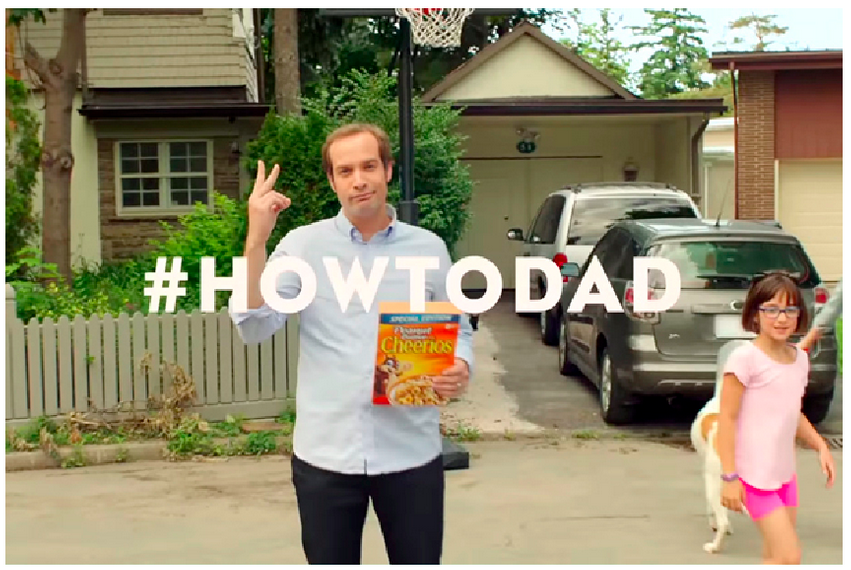Sociologists have known for a while now that even though women are more integrated in the workplace, men are not as integrated at home. This disparity places extra constraints on women’s time, which Arlie Hochschild calls the “second shift.” During the second shift, women have an obligation to spend their time off caring for their houses and their children without equivalent effort from men.
For the most part, advertising has reflected that (see over 150 examples here). Ads directed at women often tie the product to a smiling, laughing, or hugging child. But until recently, dads have been largely absent from the picture—unless it’s conveniently close to Father’s Day. When dads have made an appearance in an ad, they have been accompanied by an explanation for why their unique take on parenting can be manly, implying that childcare is still women’s work.
Recently, dads have found their way into the ads and they’re starting to look more comfortable there. Swiffer has a father taking care of his son by himself, Dove connects masculinity to caring for kids of all ages, and NyQuil even has two ads with the same plot about the constant demands of parenting for a mother and father.
But is active fatherhood the new norm?
Not quite. While some ads casually use competent dads to sell laundry detergent, others use themes that reflect a more troubled transition into a hands-on fathering style. For example, the Nissan Superbowl commercial tells the story of a father with a risky profession that keeps him on the road and away from home. The ad ends with the dad physically being in the same space as his teenage son. This is cast as a huge victory, but in reality, it’s a pretty low bar. Still, the ad got a lot of attention for being a tearjerker for its emphasis on fatherhood.

When considered as a group, these ads imply not that we’ve arrived at gender equality in the home, but instead that we’re in a stage of transition. We can appreciate active fatherhood, but we’re not entirely sure what it should look like. With the recent popularity of dadvertising, we can expect to see the commercial conversation around fatherhood continue, giving us the chance to watch as Americans learn #HowToDad.
This post originally appeared on Sociological Images, a Pacific Standard partner site, as “Dads in Ads: Are Times Changing?”




